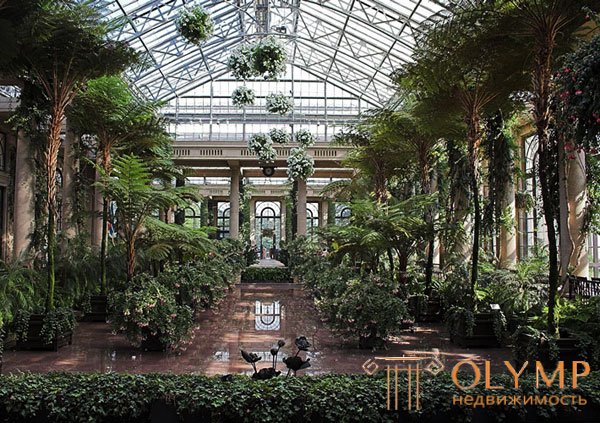
The ability of the winter garden to accumulate energy is based on the physical properties of glass (and almost the entire surface of the winter garden consists of it). The main part of the incoming solar energy is passed by the glass, and the rest is reflected by a very small percentage. Conventional glass absorbs almost completely short waves (ultraviolet rays) and long-wave rays, while passing visible light and short-wave thermal radiation almost unchanged. This radiation enters the room, and there it is almost completely absorbed by the internal walls, floor and interior items, after which it turns into heat. This heat mainly remains indoors, and a so-called “greenhouse effect” arises.

|
Properties of films in pictures Additional properties that can be given to film coatings will be more understandable if you look at these illustrations. The pictures on the left show how ordinary plastic film works. The pictures on the right show how films with modified properties work. |
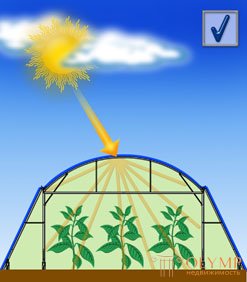 |
| The light scattering film provides more uniform illumination than it creates the best conditions for the plants and protects the leaves and fruits from burns. | |
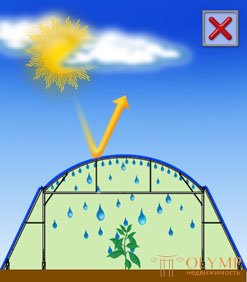 |
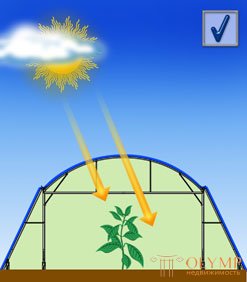 |
| The film with anti-condensation properties prevents the formation of condensate (large drops) on its inner surface, which facilitates the penetration of more light into the greenhouse and protects plants from moistening leaves with water drops, which in turn protects plants from the development of various diseases. | |
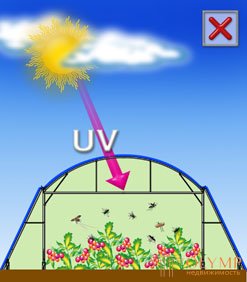 |
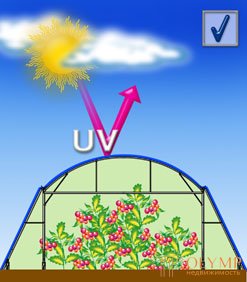 |
| Ultraviolet filtering gives an excellent effect in protecting plants from pests and diseases. The vectors of many diseases are small insect pests, for example, the whitefly. In order for the insects to identify the host plants, they need light containing an ultraviolet component. This is due to the properties of their visual perception. The absence of the ultraviolet component in the spectrum does not allow pests to visually find plants. As a result of this, damage to plants by pests and diseases is significantly reduced, which makes it possible to drastically reduce the use of pesticides or completely abandon it. |
|
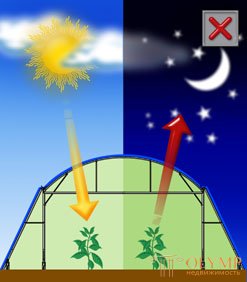 |
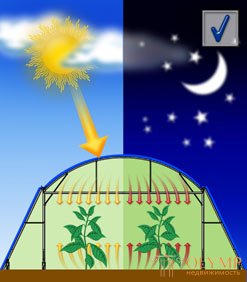 |
| Heat losses in greenhouses from infrared radiation at night can be significant. Special films reflect infrared radiation inside and allow you to retain heat inside the greenhouse on cold nights. |
|
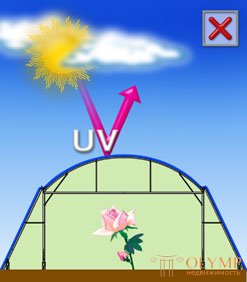 |
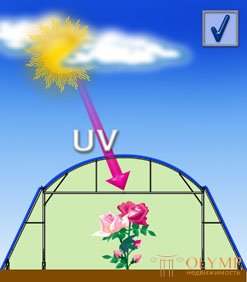 |
| When growing roses, farmers are faced with the problem of exposure to ultraviolet radiation on the anthocyanin pigment, which is contained in rose and red rose petals. Under the influence of ultraviolet petals darken. To avoid this, films are produced with a special color correction that filters ultraviolet light. However, there are varieties of roses, where, on the contrary, dosed ultraviolet radiation is necessary. These are varieties that do not have a smooth lepstic color, but bicolor or halftone colors. For these varieties, a special film of the Nectarine line has been developed, which allows to obtain the desired color of rose petals. |
|
The accumulation of solar energy can lead to a negative side effect - the possibility of overheating of the interior, because in summer, in clear weather, the temperature in the winter garden can reach + 65C. This problem can be solved with the help of a combination of sun protection measures, sufficient and the presence of heat accumulating surfaces in the winter garden. A surface that can accumulate solar energy in a winter garden, as a rule, is only the floor, so it is not recommended to block the floor with a carpet or some other covering.
A problem that applies to both heated and unheated winter gardens is high humidity, which leads to the formation of condensate. Even in heated winter gardens with double-glazed windows it is hardly possible to completely avoid condensation at low outside temperatures at night and in the morning. To prevent the accumulation of moisture and reduce the amount of condensate in the winter garden, it is necessary to consider a ventilation system.
Что бы оставить комментарий войдите
Комментарии (0)